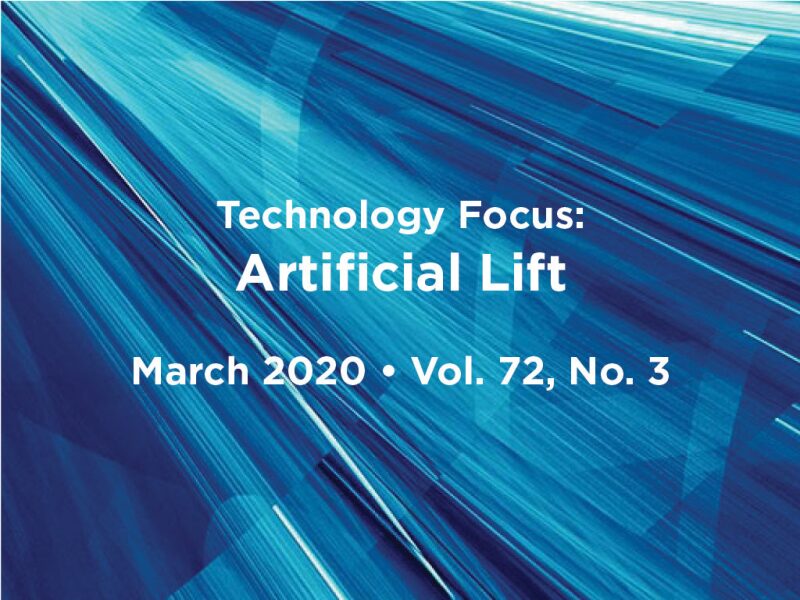Since I began writing this feature 2 years ago, I have purposely avoided discussing the elephant in the room, but it seems that now the time is right to give the topic its due. Just as the unconventional revolution has transformed our industry during the past decade, it has also dominated the world of artificial lift. In fact, it can be difficult to find an artificial lift paper or presentation these days that does not address, in some way, the design and operation of artificial lift systems in unconventional shale oil wells.
Challenges abound for operators attempting to deploy artificial lift systems in unconventional applications. As always, operators set a variety of challenging business and operational goals for themselves: minimize capital and operational expenditures; maximize drawdown over the well’s life; and minimize downtime, failure frequency, and intervention frequency. The unique nature of these wells can make it challenging to achieve many of these goals, let alone all of them. Because the wells are drilled directionally (and often in a hurry), the wellbore may feature small-diameter casing, high dogleg severity, and high tortuosity. The production profile of these wells can vary dramatically over a short period of time—wells initially producing over 10,000 STB/D can produce as little as 50 STB/D just a few years later.
Further complicating matters, unconventional wells often produce fluids with high gas/liquid ratios and require pumps to be set above the producing interval, making gas handling a challenge. To make matters worse, the wells typically produce solids early on, and they may suffer from a variety of flow-assurance issues, including asphaltenes, paraffin deposition, hydrates, and severe slugging. All of these can make it extremely challenging—if not impossible—to achieve reliable operation with downhole pumping systems. For this reason, something surprising has happened: Gas lift has emerged as the lift method of choice in new onshore completions in these basins.
While gas lift may be the “easy button,” it is not without its share of challenges. In many areas, there is a lack of adequate supply gas or compression equipment. Hydrates are common in the winter months. Limited injection pressure combined with a rapidly varying production profile can lead to frequent, costly interventions. Because the gas lift method is new to these producing basins, there is often a lack of local expertise needed to support such systems. Although gas lift may be relatively immune to the previously mentioned operational challenges, it generally provides less drawdown than what might be achieved with an optimally sized pumping system.
If I sound overly pessimistic about the prospects for artificial lift in unconventional wells, I’m actually not. Engineers thrive when they have challenging problems to solve, and unconventional resources provide artificial lift engineers with ample opportunities for innovation. In recent years, I have witnessed a windfall of new technologies, including improved electrical-submersible-pump stage design, the use of permanent magnet motors, improved downhole gas-separation techniques, tailpipe systems for slug management, a variety of new automation techniques, surface-controlled gas lift valves, modular high-pressure compression systems, novel downhole completion designs, and more. I am thrilled with the array of new artificial lift technologies that the unconventional revolution has prompted, and I can’t wait to see what the future holds.
This Month's Technical Papers
Mass Implementation of Ultrahigh-Speed ESP Systems Increases Reliability, Savings
Transient Plunger-Lift Model Improves Prediction of Liquid Unloading From Gas Wells
Dynamometer-Card Classification Uses Machine Learning
Recommended Additional Reading
SPE 194396 Downhole Gas Separation in a High-Gas/Liquid-Ratio CO2 Application by B.L. Nicholson, Occidental
SPE 196146 First Digital Intelligent Artificial Lift Production Optimization Technology in UAE Dual-String Gas Lift Well—Business Case and Implementation Plan by Ahmed Alshmakhy, Abu Dhabi National Oil Company, et al.
SPE 194408 Electrical Submersible Pump Powered Injection Systems Enable the Development of West-of-the-Nile Egypt Assets by Miguel Munoz, Qarun Petroleum, et al.

| Greg Stephenson, SPE, is a senior engineering adviser for artificial lift in Occidental Petroleum’s Worldwide Engineering and Operations Group in Houston. In this role, he provides technical support, mentoring, and training for multiple artificial lift techniques. Stephenson specializes in the various aspects of artificial lift, production surveillance, automation, and optimization. He has taught numerous industry courses throughout the world and written a variety of technical papers and publications on the subject. In addition to his work at Occidental, Stephenson currently serves on the JPT Editorial Committee and the SPE Production and Facilities Advisory Board, and has served as the program chairperson for the 2018 SPE Artificial Lift Conference and Exhibition—Americas. He also serves on the board of directors of the Artificial Lift Research and Development Council, and he chairs API Task Group 19G, which manages 25 product standards, recommended practices, and technical reports related to artificial lift technology. Stephenson holds a BS degree in petroleum engineering from Texas Tech University. He can be reached at greg_stephenson@oxy.com. |


